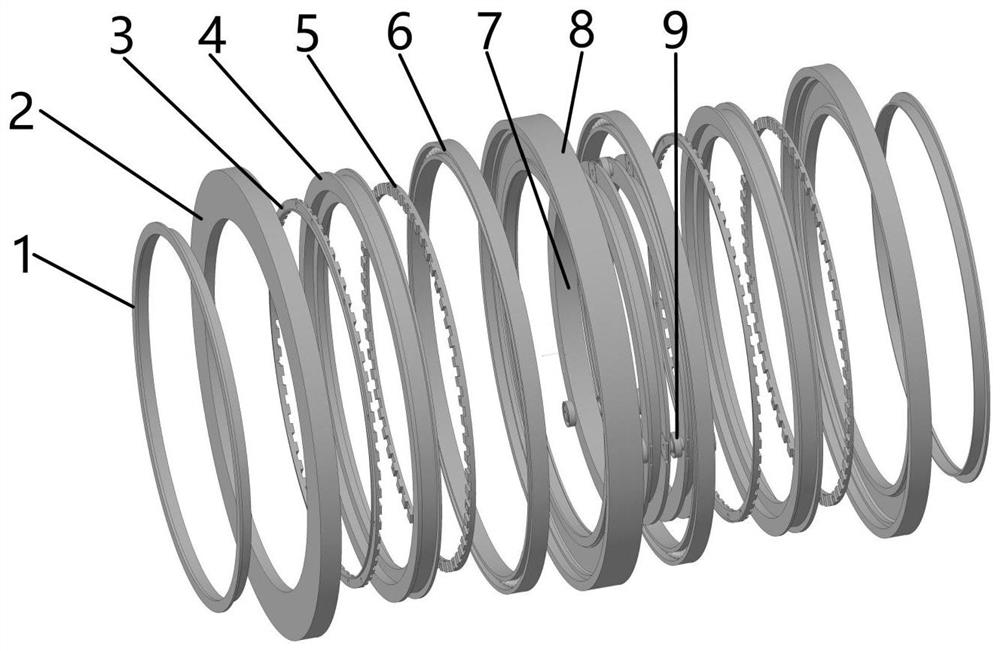Lightweight design method of electromagnetic automatic balancing device
A lightweight design, automatic balance technology, applied in design optimization/simulation, geometric CAD and other directions, can solve the problems of large installation space, heavy overall mass, large radial thickness and axial thickness, etc., to reduce friction and friction. Excessive friction, the effect of expanding the range of installation situations, reducing size and mass
- Summary
- Abstract
- Description
- Claims
- Application Information
AI Technical Summary
Problems solved by technology
Method used
Image
Examples
Embodiment 1
[0067] Optimal design of the thickness of the excitation ring and the thickness of the permanent magnet; when modeling in Maxwell, set the thickness of the excitation ring to 2-8mm, and the thickness of the permanent magnet to 1-5mm, and parametrically calculate and solve the self-locking torque. The solution results are attached Image 6 As shown, in this interval, the thicker the permanent magnet, the greater the self-locking torque; and as the thickness of the excitation ring increases, the self-locking torque increases first and then basically remains unchanged. Considering the size of the self-locking torque and the overall size of the balance head, a 5mm permanent magnet and a 4mm excitation ring are used in the structural design after electromagnetic simulation.
Embodiment 2
[0069] Optimal design of the number of teeth of the excitation ring; when modeling in Maxwell, the excitation ring models of 50 teeth, 60 teeth, 75 teeth, 90 teeth and 100 teeth are respectively established to solve the change and stability of the self-locking torque in the two-step process of a single permanent magnet The size of the total self-locking torque of the self-locking position (the sum of the self-locking torques of all permanent magnets).
[0070] The solution results are attached Figure 7 As shown, in the two-step process, each step of the single permanent magnet self-locking torque curve is similar to the sinusoidal curve, but because the permanent magnet respectively undergoes one step from the solid part of the excitation ring to the blank part of the excitation ring and one step from the excitation ring The blank part is stepping towards the solid part of the excitation ring, and the changing curves of the self-locking torque in these two steps are different...
PUM
 Login to View More
Login to View More Abstract
Description
Claims
Application Information
 Login to View More
Login to View More - R&D
- Intellectual Property
- Life Sciences
- Materials
- Tech Scout
- Unparalleled Data Quality
- Higher Quality Content
- 60% Fewer Hallucinations
Browse by: Latest US Patents, China's latest patents, Technical Efficacy Thesaurus, Application Domain, Technology Topic, Popular Technical Reports.
© 2025 PatSnap. All rights reserved.Legal|Privacy policy|Modern Slavery Act Transparency Statement|Sitemap|About US| Contact US: help@patsnap.com



